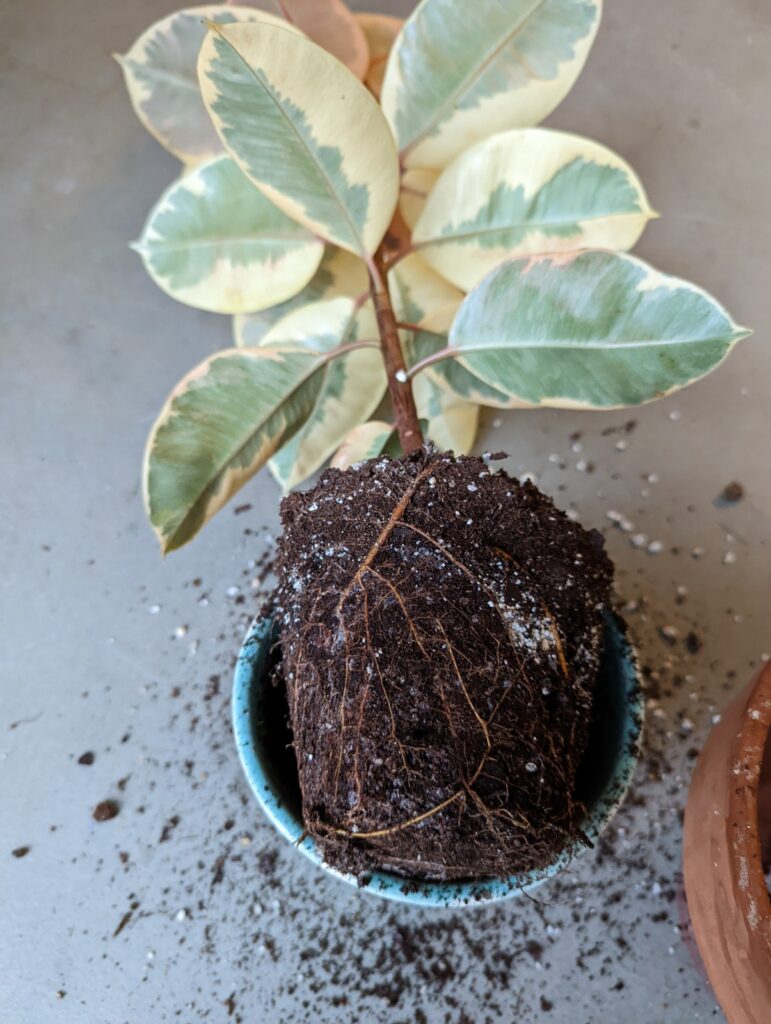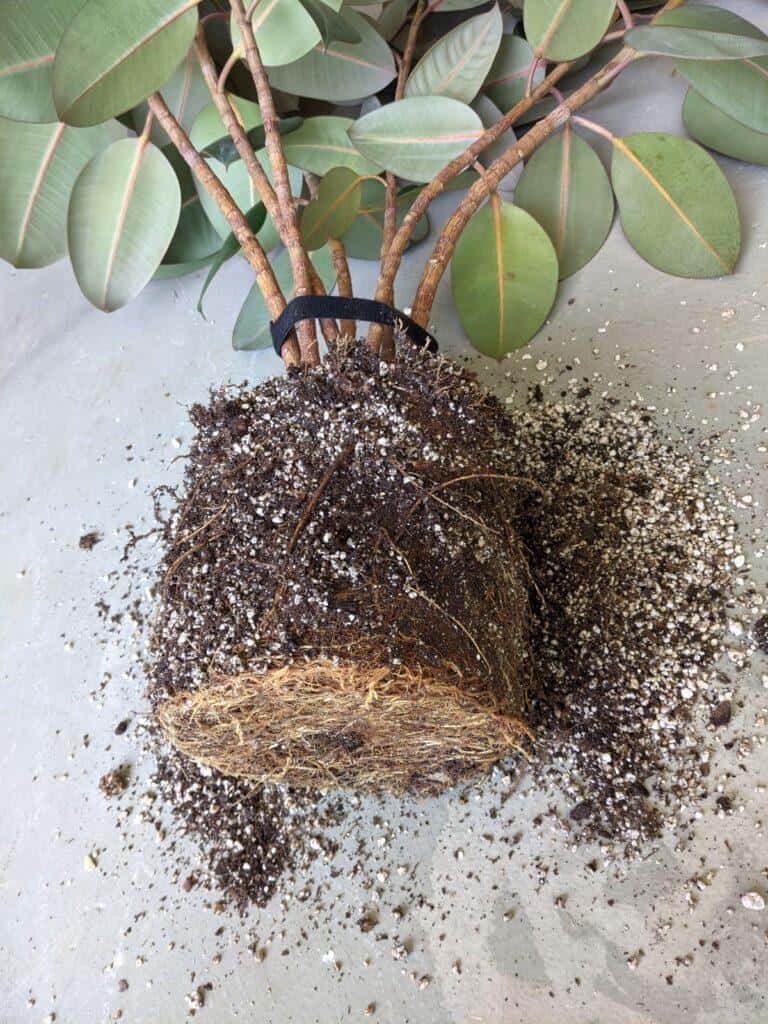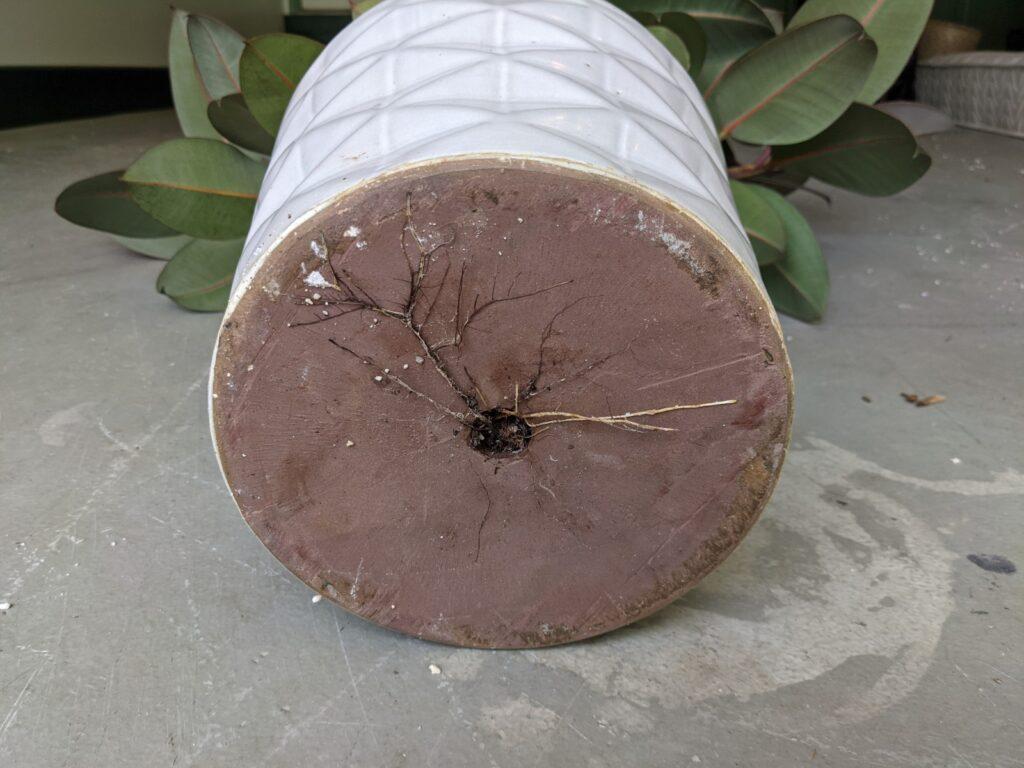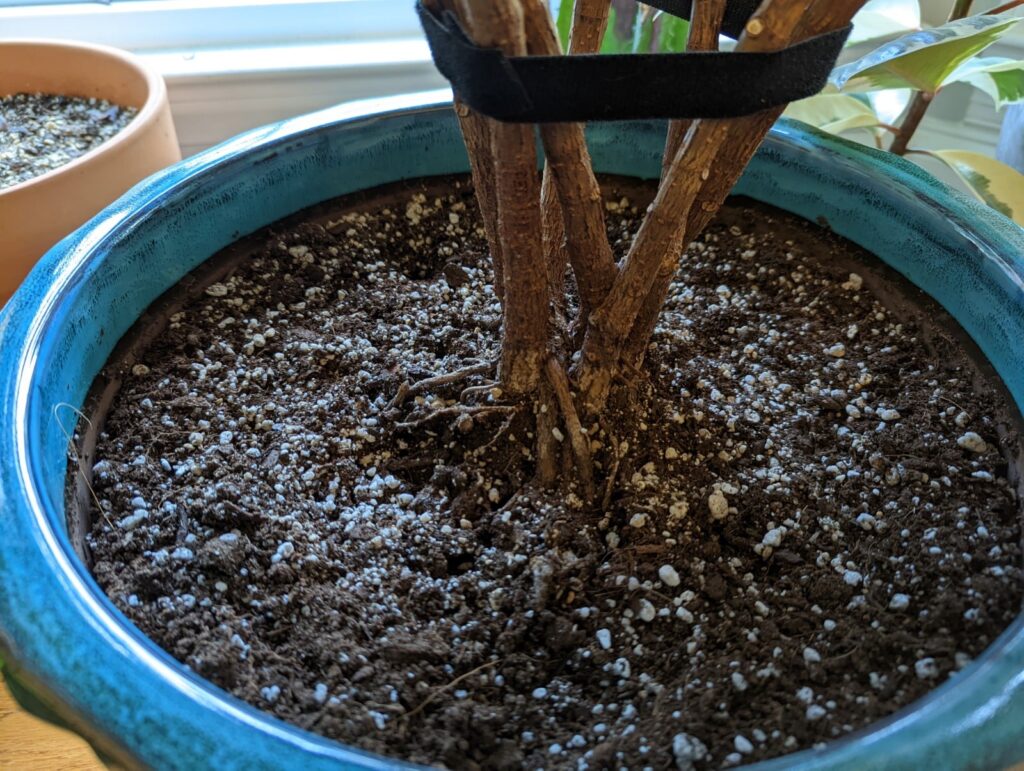I repotted two of my Rubber Trees recently. In doing so, I decided it would be a good idea to create a post on Rubber Tree roots. People often ask questions about the leaves or the stems of their houseplants. That makes sense because that’s the part we actually see all the time. However, what’s under the soil can be just as interesting and important for overall plant health.

Indoor vs. Outdoor Rubber Tree Roots
I didn’t know this until recently but Rubber Trees in the wild are often considered invasive. Their root systems are especially invasive. The roots typically grow shallow outdoors. Their roots are known to destroy sidewalks and other structures. In addition, they grow aerial roots that are equally invasive.
I find indoor Rubber Tree roots to be much different. Indoors, Rubber Trees grow on the slower side. They typically only require being repotted every two to three years. In appearance, the roots are pretty fine compared to some other plants like a Monstera for example, which has very thick roots. Rubber Tree roots are whiteish or light brown and should feel firm to the touch. When grown in pots their root system cannot spread shallow and wide like they do in the wild.

My Burgundy Rubber Tree’s roots grew towards the bottom of the pot instead. This is the opposite of what outdoor Rubber trees do with shallow and wide roots. These roots grew toward the moisture, and if your roots are growing downward that’s a good sign that you have well-draining soil. They actually became so concentrated at the base that the roots began to grow out of the drainage hole at the bottom of the pot as you can see from the picture below. This prompted me to repot it to give the roots more room.

As I mentioned earlier, Rubber Trees also grow aerial roots. These are most common on Rubber Trees that grow outdoors. Indoor Rubber Trees can grow aerial roots as well. They will most likely be very thin ones toward the base of the plant. In fact, they often end up growing down into the soil. See an example of this below. These were once aerial roots that eventually found soil. I wrote a whole post on Rubber Tree aerial roots if you want to know more.

Root Health
Appearance
Generally speaking, Rubber Tree roots should be whiteish or light brown. Aerial roots will appear the same color as the trunk. Roots should be firm to the touch. In addition, there should not be any odor coming from the roots or the soil. If the roots are squishy or smell, then they are unhealthy and you’re dealing with root rot. Root rot is caused by an abundance of moisture in the soil. That moisture leads to disease and rotting in the roots. A good way to preempt overwatering your plant is to pay close attention to soil moisture. A moisture meter makes quick work of this task. Always use one before you water to make sure that you do indeed need to water your Rubber Tree.
Mannerisms
Rubber Tree roots are pretty grabby. If your Rubber Tree is in a terracotta or other unglazed pot, be ready for a workout the next time you repot. My big Burgundy Rubber Tree was in that white pot above, with the roots coming out of the bottom. You can even see how grippy the roots are on the bottom of the pot. That pot was unglazed on the inside and it was an epic battle to get it out. I had to use a spackle knife to dislodge the rootball from the sides of the pot. Kind of like how you cut brownies away from the side of a baking pan, but more intense. Then I had to wiggle it around for a while to finally get it out.
Rubber Trees also excrete a white sap. It can come from broken leaves, stems, or roots. This sap is a skin irritant for many people. It’s a good idea to use caution when doing any kind of manipulating of this tree because of the sap. You can decrease your likelihood of exposure by using gloves and wearing long sleeves when handling it. It goes without saying, but I’ll say it anyway. Do not get the sap in your eyes or in your mouth. It’s also harmful to pets, so keep them out of reach.
How to Keep Roots Healthy
Luckily, Rubber Trees are fairly resilient. The roots can recover from some pretty major disturbances. The way to keep your Rubber Tree roots the healthiest is to provide them well-draining soil that is occasionally supplemented by nutrients. You also want to provide the correct level of moisture. In general, it’s best to let the top inch or two of soil to dry before you water again. Indoor Rubber Trees are not heavy feeders because they’re slow growers. If you use an all-purpose houseplant fertilizer about once a month during the growing season, that should be more than adequate.
I hope I have answered all your questions about Rubber Tree roots. If not, post your question in the Comments section.

I'm a long time plant lover on the quest to happily coexist with as many plants as I can. Let's grow!

This is very helpful. Thank you
Rubber trees are nice the only downside is they create a mess with your underground plumbing when planting outside..